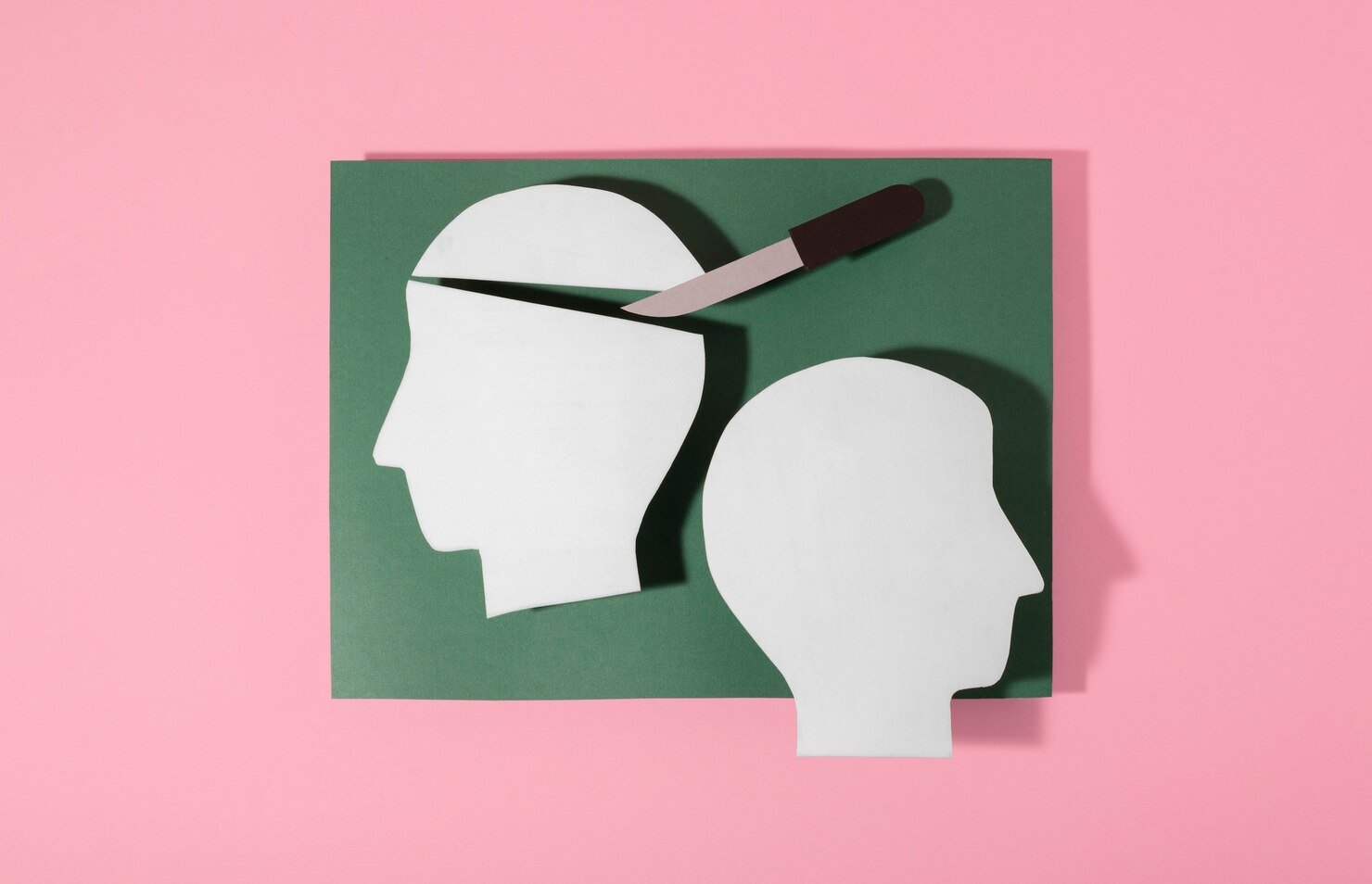Blog
Interposition in Psychology: Understanding Depth Perception

Interposition is a key concept in psychology, specifically within the study of visual perception. It refers to a monocular depth cue that helps individuals perceive the relative distance of objects based on their overlapping position. This phenomenon occurs when one object partially blocks another, allowing the brain to interpret the blocked object as being further away. Interposition plays a crucial role in our ability to navigate the world and understand spatial relationships. This article explores interposition in-depth, including its role in visual perception, real-world applications, and its relationship to other depth cues.
What Is Interposition?
Interposition, also known as overlap, is a visual depth cue in which one object appears closer because it partially obscures another object behind it. This simple yet powerful cue allows the brain to determine depth and distance without requiring both eyes to work together. Since interposition relies on only one eye to function effectively, it is classified as a monocular depth cue—meaning it does not require binocular vision (both eyes).
For example, if you see a tree partially blocking a house, your brain automatically interprets the tree as being closer than the house. Even though the house may be larger, interposition provides a reliable way to judge relative distances in a two-dimensional image or real-world environment.
How Interposition Works in Visual Perception
The human brain processes depth using multiple visual cues. Interposition works by providing partial occlusion, which allows the mind to infer spatial relationships. When one object overlaps another, the visual system assumes that the occluded (hidden) object is further away, even without additional depth cues.
This process is automatic and occurs without conscious thought. The brain integrates interposition with other monocular cues such as linear perspective, shading, and relative size to create a more complete picture of depth and distance. This integration helps individuals perceive their environment accurately, even in situations where binocular vision is not available.
The Role of Interposition in Depth Perception
Depth perception is essential for daily activities such as walking, driving, and interacting with objects in the environment. Interposition contributes to depth perception by allowing individuals to make quick judgments about the relative distances between objects. Since the human eye captures a two-dimensional image, the brain must rely on depth cues like interposition to create a three-dimensional understanding of the world.
Without interposition, it would be difficult to determine which objects are closer or farther away in complex visual scenes. This is especially important in real-world settings where depth cues are necessary for navigating crowded spaces, playing sports, or recognizing distances while driving.
Real-World Examples of Interposition
Interposition is a common visual cue used in both natural and artificial environments. Here are some everyday examples where interposition plays a crucial role:
Photography and Art
Artists and photographers use interposition to create a sense of depth in two-dimensional images. By arranging objects in a way that some overlap others, they provide the viewer with depth perception cues. A landscape painting, for example, may depict trees in the foreground partially covering mountains in the background to create the illusion of distance.
Video Games and Virtual Reality
Game developers and designers incorporate interposition into video games and virtual reality environments to make digital worlds appear more realistic. By layering objects to partially cover others, they create a sense of three-dimensional space, making virtual environments more immersive.
Driving and Traffic Situations
Drivers rely on interposition to judge distances between vehicles and obstacles. When a car partially covers another vehicle on the road, the driver understands that the covered vehicle is further away. This depth perception cue helps drivers make safe decisions while maneuvering in traffic.
Nature and Everyday Observation
In natural settings, interposition helps people judge the distance between trees, buildings, and other objects. When walking through a park, for instance, people can determine which trees are closer based on how they overlap with one another. This ability to perceive depth enhances spatial awareness and navigation.
Interposition and Other Depth Cues
Interposition is just one of many monocular depth cues that help the brain interpret distance. It often works in combination with the following depth cues:
Relative Size
Objects that appear larger are typically perceived as being closer than smaller objects. When combined with interposition, relative size reinforces the perception of depth. For example, if two trees are of equal size but one appears larger, the brain assumes the larger tree is closer.
Linear Perspective
Parallel lines appear to converge in the distance, creating an illusion of depth. Roads, railways, and hallways demonstrate this cue, which works alongside interposition to enhance spatial perception.
Texture Gradient
Objects that are closer appear more detailed, while those further away have less distinct textures. Interposition helps emphasize this effect by placing sharper, clearer objects in front of less defined ones.
Shading and Shadows
Light and shadows help indicate depth by showing how objects relate to their surroundings. When combined with interposition, shading can enhance the illusion of three-dimensional space in images and real-world scenes.
The Importance of Interposition in Psychology
Interposition is not just a visual phenomenon—it has implications in cognitive psychology, neuroscience, and even social perception. It plays a role in perceptual organization, which is how the brain structures visual input into meaningful patterns. Understanding interposition helps researchers explore how humans interpret complex visual stimuli.
Additionally, studies on depth perception and interposition have applications in areas such as cognitive psychology, vision therapy, and artificial intelligence. AI and machine learning systems, for example, must be trained to recognize depth using cues like interposition to improve computer vision technology.
Limitations of Interposition as a Depth Cue

While interposition is a powerful depth cue, it has some limitations. It only provides relative depth information, meaning it does not specify exact distances between objects. Unlike binocular cues such as stereopsis (depth perception based on both eyes working together), interposition cannot determine precise depth measurements.
Additionally, interposition can sometimes create visual illusions. If objects are arranged in an unexpected way, the brain may misinterpret depth relationships. This can happen in optical illusions, stage design, or forced perspective photography, where overlapping objects create misleading perceptions of distance.
Conclusion
Interposition is a fundamental concept in visual perception that helps individuals judge the relative distance of objects based on overlap. As a monocular depth cue, it plays a crucial role in everyday life, from navigating environments to understanding artistic compositions. When combined with other depth cues, interposition enhances spatial awareness and depth perception, making it an essential part of how humans interpret the world. Whether in art, video games, driving, or natural settings, interposition remains one of the most effective ways the brain perceives three-dimensional space in a two-dimensional visual field.
-

 Tech1 year ago
Tech1 year agoHow to Use a Temporary Number for WhatsApp
-

 Business2 years ago
Business2 years agoSepatuindonesia.com | Best Online Store in Indonesia
-

 Social Media1 year ago
Social Media1 year agoThe Best Methods to Download TikTok Videos Using SnapTik
-

 Technology1 year ago
Technology1 year agoTop High Paying Affiliate Programs
-

 Tech10 months ago
Tech10 months agoUnderstanding thejavasea.me Leaks Aio-TLP: A Comprehensive Guide
-

 FOOD12 months ago
FOOD12 months agoHow to Identify Pure Desi Ghee? Ultimate Guidelines for Purchasing Authentic Ghee Online
-

 Instagram3 years ago
Instagram3 years agoFree Instagram Auto Follower Without Login
-

 Instagram3 years ago
Instagram3 years agoFree Instagram Follower Without Login




















